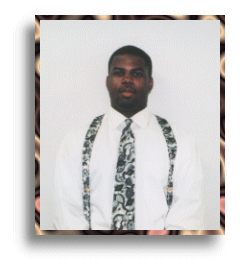![]()
Ronald E. McNair Program
![]()
Ronald E. McNair Program

Corey Wallace |
SCHOOL: University of Mississippi
MAJOR: Mechanical Engineering MENTOR: Dr. Tyrus McCarty EXPECTED GRADUATION DATE: May, 2000 ORGANIZATIONS:
|
![]()
ABSTRACT
Utilizing a Computational Numerical Model to Study the Pultrusion of Composites
The purpose of the project is to identify variables in the pultrusion process and utilize these variables to enhance the products’ quality. The product of the process is a composite formed from the desired qualities. The composite is formed on the macroscopic level, rather than the microscopic level in which alloys are formed. The particular variables to be tested are shape of the material entry, the speed at which the material is feed through the pultrusion machine, and a combination of the two, respectively. Testing is done through use of the PTI 804 commercial scale protruder. The University of Mississippi and one other American University have this instrument, making this an unique experiment.
Pultrusion is a method of manufacturing in which a composite is produced. The process follows a systematic method. Fibers of a material are pulled through a resin bath, then through a shaping system that also removes excess material. This section gives the material its uniform shape. The material is then heated and cured until ready. It is finally cut into the desired length. The composite is to take the desirable qualities from the materials. The research aspects of pultrusion indicate that it is not as thoroughly tested as the other methods of forming composites. Other methods of forming a composite include compression molding, injection molding and extrusion. Pultrusion remains the target production method due to its cost-effectiveness.
Through experimentation the shape of the material entry is altered.
It is believed that, the change in shape will increase pressure, alleviating
voids in the material. The voids are pressure points of the material
and cause failure of the offspring composite. The main experimentation
involves different angles produced by the wedge shapes. There are
mathematical models formulated to find the limits of the shape. This
information is calculated through computer programs and simulations.
The resulting answers will provide how these angles act. From the
best angles the speed ratio can be computed. The process can be set
standard for various materials through the math model. Pultrusion
can not only be cost effective but solved through a model.
![]()